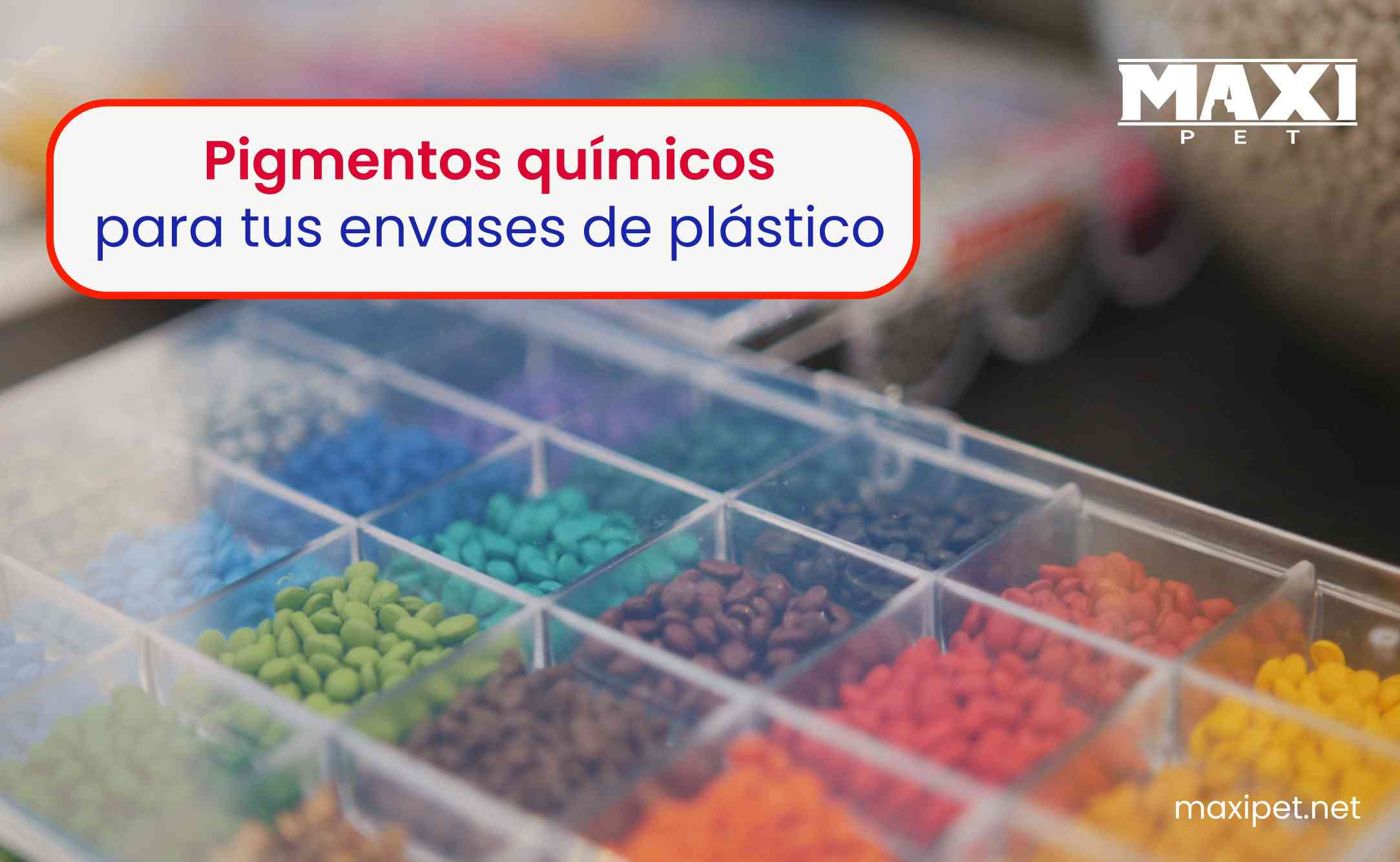Chemical Pigments for your Plastic Containers

We are knowledgeable about colored and customized plastic products. Obtaining the desired coloration requires 3 important steps: colorant choice, colorant dispersion, and masterbatch dilution in the final processing phase. Without a doubt, chemical pigments are a very useful tool within the industry to personalize products, which is why it is so important to choose the right colorant for the type of plastic you are working with.
We know that it is very important to know the pigment's source and its advantages in choosing the best option for your product. Don't worry, below we explain everything you need to know about chemical pigments.
What are Chemical Pigments?
Pigments are chemical compounds that add color to a certain plastic object. They are classified into three types: organic, inorganic, and synthetic. The former comes from plants and animals, the second is a metallic compound of mineral origin, and the latter is produced in laboratories through chemical reactions. Generally, synthetic pigments are those intended for industries.
When you decide to acquire any type of pigment it is very important to take into account:
- Material compatibility
- Pigment's Origin
- Pigment Hue
The power of Masterbatch
Masterbatch is a concentrated mixture of chemical pigments with a size between 15 and 25 mm and is usually in the form of cylindrical, spherical, or lentil pellets. This shape directly influences color dispersion during the process. Masterbatch pigments are used to color plastics manufactured through different processes such as injection, injection-blow, extrusion, and extrusion-blow, among others.
Pigment in Pullets Advantages
Without a doubt, chemical pigments offer endless benefits for the plastics industry. We list 4 significant advantages below:
Production area cleansing. In the case of powder pigments, it is more difficult to keep a clean area during pigmentation. The masterbatch does not stain, which creates a cleaner environment without contamination.
It is easier to handle and weigh the pigment. The pellet's presentation facilitates its transport, and handling and also simplifies the weighing process since it is much more difficult to weigh powder or liquid.
Reduction in moisture absorption. Hygroscopicity is the ability of some substances or materials to absorb moisture. The powder has a higher absorption capacity compared to the masterbatch.
Allows automatic dosing. The pellet does not adhere to the machinery like powder, which speeds up the pigmentation process with automatic dispensers. Therefore, it offers great uniformity due to optimal pigment dispersion.
If you are interested in acquiring a resistant, 100% recyclable, and colored container or cap, do not hesitate to contact our team.



